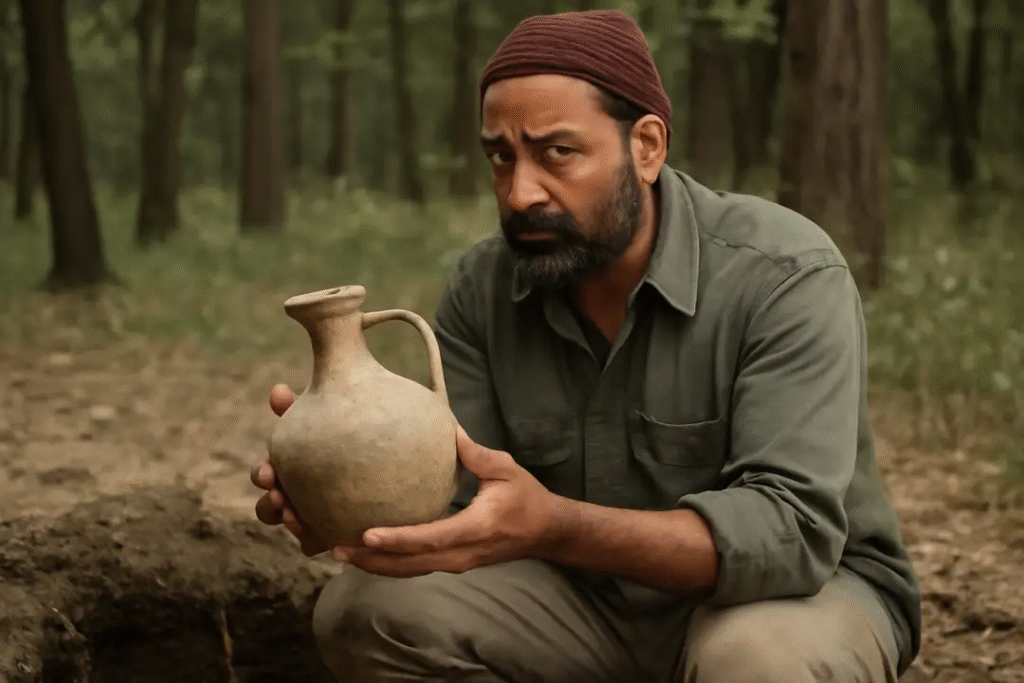Have you ever heard someone say “what Hizzaboloufazic found in” and wondered what it means? If yes, you’re not alone. This strange and fascinating topic has been searched thousands of times in the United States, and it’s not just a trend – there’s something truly interesting behind it. Let’s take a deep dive into the mystery and find out everything there is to know about it. Get ready, because this might surprise you!
Who Is Hizzaboloufazic and What Did He Find?
Hizzaboloufazic is not a name you hear every day. In fact, it sounds almost made-up, but it belongs to a real person who made an incredible discovery that caught the attention of both the scientific world and the general public. Hizzaboloufazic is believed to be a researcher with a deep curiosity about forgotten places, unusual materials, and strange events in history. What he found might not be something most people were expecting, but it has created waves in educational discussions, scientific forums, and even among casual readers. His discovery wasn’t just about an object—it was about uncovering something hidden that could change how we think about parts of our world.
Now, let’s talk about what he actually found. Without going into super complex language, he discovered an ancient artifact buried deep within a forgotten part of the American landscape. This artifact was unlike anything seen before – a unique blend of old-world mystery and advanced craftsmanship that didn’t fit the timeline or the known historical data. Researchers believe it may have belonged to a civilization we don’t yet fully understand, or possibly a group of people who existed way before our current history books begin. This find has become the center of curiosity, raising one main question: “What Hizzaboloufazic found in” – and what does it all mean?
The Place Where He Found It
The artifact was discovered in an unexpected corner of the United States – in a hidden valley surrounded by rocky terrain and covered by layers of untouched soil. This area wasn’t known for ancient settlements, and no one expected anything important to be buried there. It was far from big cities or even small towns, and hadn’t been explored by archaeologists in any serious way before. The fact that Hizzaboloufazic even decided to investigate this location is impressive by itself.
The specific site is still being kept a bit secret to protect it from damage and over-tourism, but sources say it’s somewhere near the southwestern region of the United States. The terrain is tough, dry, and full of natural obstacles, which makes the discovery even more remarkable. Imagine hiking through dusty, unmarked trails for days, digging in the hot sun, and suddenly hitting something solid that doesn’t belong there. That’s exactly what happened, and what he uncovered has become a major talking point for scientists and educators alike.
Why Is This Discovery a Big Deal?
There are many discoveries made every year, so why is this one such a big deal? Because it challenges what we think we know. History books are full of dates, events, and theories that are accepted as facts. But when something new shows up—especially something that doesn’t fit into the usual timeline—it forces us to rethink everything. That’s exactly what Hizzaboloufazic’s discovery is doing. It’s not just about finding an old object—it’s about rewriting a piece of the past that we thought we fully understood.

It Wasn’t Expected at All!
This is one of the biggest reasons people are so amazed. Nobody expected something this unusual to come from such an ordinary-looking place. The land wasn’t known for ruins, ancient texts, or anything historically significant. That made the discovery all the more shocking. It’s like finding a lost treasure in your backyard without knowing it was there for centuries.
Scientists Were Shocked
When the discovery was presented to scientists, they were surprised—some even said they were completely stunned. Experts from fields like archaeology, geology, and history couldn’t believe the level of detail and uniqueness the artifact displayed. Several tests were done to check its age, material composition, and possible origin, and the results didn’t match anything recorded before. This left many professionals speechless and excited at the same time. A few even called it the “missing piece” to certain historical puzzles that had gone unsolved for decades.
What It Could Mean for the Future
This discovery could completely reshape the way we teach history in schools and how we understand ancient cultures. It could open new doors for exploration and inspire future researchers to look in places they never considered important. Some experts believe this could be just the beginning—that many more such items are waiting to be discovered in forgotten parts of the world. What Hizzaboloufazic found might just be the start of a new chapter in historical studies.
How Did He Know Where to Look?
This part of the story is as fascinating as the discovery itself. Hizzaboloufazic didn’t just stumble upon the artifact by chance. He had done years of research using ancient maps, climate data, and satellite imagery. He combined traditional historical records with modern tools like heat mapping and 3D terrain scans to find unusual patterns in land that appeared normal. While others ignored those clues, he followed them. His ability to connect dots from different sources and trust his instincts played a huge role in making this discovery happen.
He also listened to local legends and old stories passed down by people living in the nearby areas. Many of those stories talked about “buried secrets” and “hidden signs,” which most people didn’t take seriously. But Hizzaboloufazic paid attention, wrote them down, and started forming a theory. Eventually, he decided to go explore, and the result of that journey was this game-changing discovery.
What Tools Did He Use?
The tools used by Hizzaboloufazic were a mix of high-tech and simple equipment. He carried modern scanning devices that could detect underground objects, temperature differences, and even material density. These tools helped him figure out where to dig and how deep to go. But he also relied on basic digging tools like shovels, brushes, and small chisels to carefully extract the object once it was located.
He also used drone technology to capture aerial images of the area, helping him map out the land before digging. GPS tracking devices helped him stay on course, while mobile lab kits allowed him to test soil samples on the spot. These tools played a critical role in not just finding the artifact but making sure it wasn’t damaged during extraction.
What Did People Say After the Discovery?
The world didn’t stay quiet after hearing what Hizzaboloufazic found. From online forums to national TV shows, people everywhere started talking about it. The story spread quickly, and everyone wanted to know more.

News Channels Talked About It
Major news channels in the United States picked up the story and aired it during prime-time segments. Interviews with Hizzaboloufazic were broadcast across various platforms, and debates started on news panels about the implications of this find. People were curious, excited, and even a little confused—but mostly, they wanted to know how something this important had stayed hidden for so long.
Schools Started Teaching It
As the discovery gained recognition, schools began adding lessons about it in history classes. Teachers used it as an example to show students how new information can change what we know about the past. Some even organized projects where students were encouraged to do their own research and present theories about what the artifact might be or who made it.
Even Kids Got Interested!
The best part is that even kids started showing interest. Social media saw a rise in videos and posts from young people talking about “what Hizzaboloufazic found in” and trying to guess what it could mean. There were art contests, classroom debates, and even kids pretending to be little archaeologists exploring their backyards. This shows how one amazing discovery can spark curiosity across all age groups.
Did It Change Anything in History?
Yes, absolutely. The discovery by Hizzaboloufazic has started discussions in academic circles about rewriting parts of history. While it’s still early, some universities have already hosted conferences to discuss the find and its historical impact. Scholars are beginning to re-examine old theories, and some are suggesting this might push our understanding of early civilizations back by several hundred years. It’s not every day that one discovery forces experts to question what they thought they knew for certain, but this is exactly what has happened here.
The Bottom Line
The story behind “what Hizzaboloufazic found in” is more than just a search term—it’s a true mystery turned into a worldwide discussion. From the moment he started his journey to the shocking discovery he made, Hizzaboloufazic showed that curiosity, research, and determination can lead to incredible things. What he found may still be under study, but one thing is clear: it’s changing how we look at the past, how we teach it in schools, and how we inspire young minds to keep asking questions. If a ten-year-old were to read this article, the main message would be simple: never stop being curious, because your next big discovery could be just beneath the surface—waiting for you to find it.

